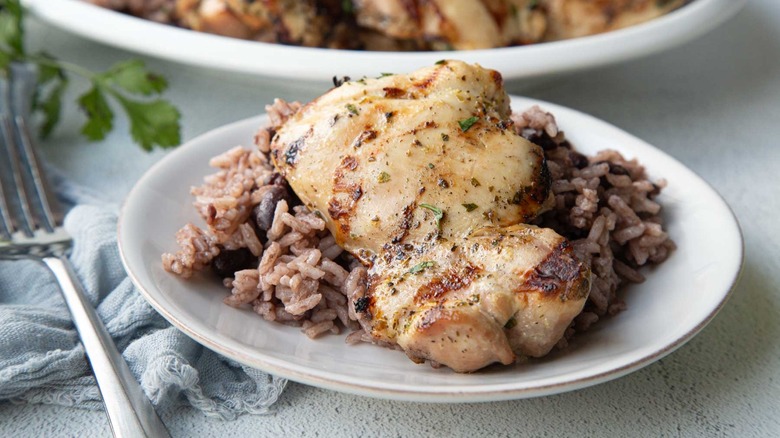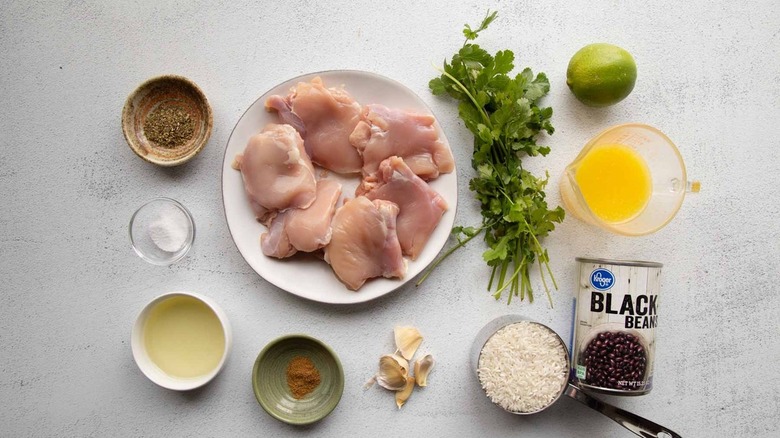Citrus Juices Give Mojo Chicken A Burst Of Flavor
If your chicken can't get its mojo working, put some zing in that thing with a juicy infusion of lime and orange. Mashed recipe developer Kate Shungu describes her grilled mojo chicken as an "easy dinner that's big on flavor." Much of the latter comes from the two aforementioned citrus fruits.
While the mojo chicken cooks in just minutes, either on an outdoor grill or a stovetop grill pan (or a regular old frying pan, if need be), you'll need to start preparing it at least two hours in advance. That way, the marinade — which consists of olive oil, oregano, garlic, cumin, cilantro, and salt in addition to the citrus juices — has time to soak into the meat and work its magic. Not only will the orange and lime juices lend the dish some tangy flavor, but they also help tenderize the chicken, while the oil helps prevent it from drying out as it cooks.
Serve your mojo chicken with Cuban sides to honor its roots
Mojo chicken does not get its name from the blues standard we alluded to in the opening line, nor is it the namesake of Mojo Nixon of "Elvis is Everywhere" fame. In this instance, the term "mojo" is a Spanish gastronomical one used to refer to several different types of sauces, with this particular combination of citrus juices and seasonings said to have originated in the Canary Islands. It really caught on in Cuba, though, and Kate Shungu likes to serve her mojo chicken with a side of black beans and rice that in Cuba is known as "moros y cristianos."
Mojo chicken would also taste great alongside any number of other Cuban sides, such as baked or fried plantains, arroz con maize (rice with corn), or yuca con mojo, which is boiled yucca with a sauce similar to the marinade used in this chicken dish. You could also serve mojo chicken as part of a Caribbean smorgasbord with other Cuban entrees like vaca frita (we have an Instant Pot recipe for this fried beef dish) and ropa vieja (we've got a recipe for this stew, too). The former dish is also made with fresh orange and lime juice, while the latter gets its tang from vinegar, instead.

